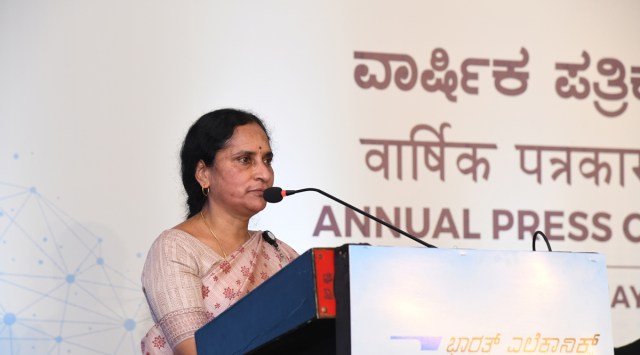Coast Guard to get 38 radar stations and four mobile stations by next year
An official says the coastline of 7,516.6 km will be completely leak-proof as the surveillance system will identify and track boats approaching the coastline to prevent 26/11-type attacks.
 Anandi Ramalingam, Chairman and managing director of the BEL. (Express Photo)
Anandi Ramalingam, Chairman and managing director of the BEL. (Express Photo)The phase II project of the coastal surveillance system developed by the public-sector undertaking Bharat Electronics Limited (BEL) will be operational along India’s coastline by 2023 with the installation of 38 radar stations and four mobile stations.
The Coast Guard project aims to cover the entire Indian coastline in two phases.
“Under phase 1 of the project, BEL had established 46 stations, of which 10 are on islands that include Andaman and Nicobar, Lakshadweep and 36 are on the mainland. Phase II will cover the gaps and strengthen the system with 38 more radar stations. Under phase II, we are coming up with four mobile stations as well. After the completion of phase II, the coastline of 7,516.6 km will be completely ‘leak-proof’. The components for this project have been supplied,” a BEL official told indianexpress.com.
The official, who did not want to be identified for this report, said the surveillance system would prevent 26/11-type attacks. It identifies and tracks boats approaching the coastline. Officials involved in the project said it would provide total scalable surveillance solutions for vessels, ports, waterway and offshore facilities.
“After the 26/11 attack, the government wanted to implement a coastal surveillance scheme that will prevent such attacks in the future. It will have various sensors. The information of vessels can be sought. This is a completely indigenous product,” he said.
The installation, commissioning and life-cycle support of the radar stations will be undertaken by BEL. In November 2020, the defence PSU announced that Denmark-based Terma would provide additional technology for the project.
The official said data fusion was an important aspect of the radar stations. “The data will be processed and sent to the control centres for surveillance operations. The coastal surveillance system involves correlation of multiple radars, sonars, automatic identification system, and closed-circuit cameras. The major subsystems of the radar station will have meteorological sensors, which will give weather updates, electro-optic sensors, radar adapter etc,” he said, adding that the system would detect and identify vessels entering unauthorised buffer zones around offshore oil and gas platforms.
Mauritius, Sri Lanka and Seychelles have also been integrated into the coastal surveillance network.












